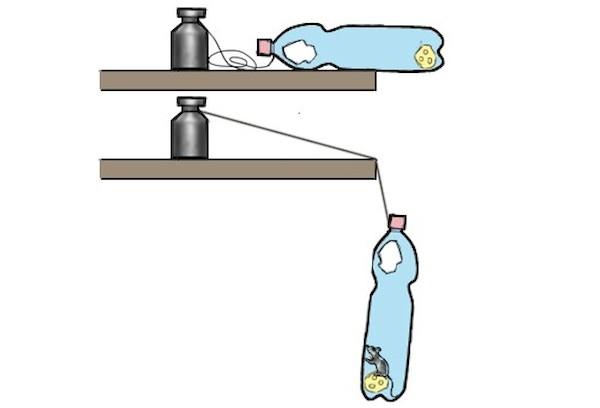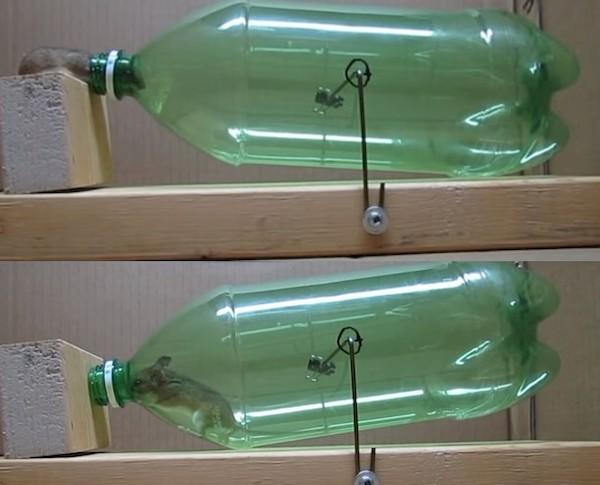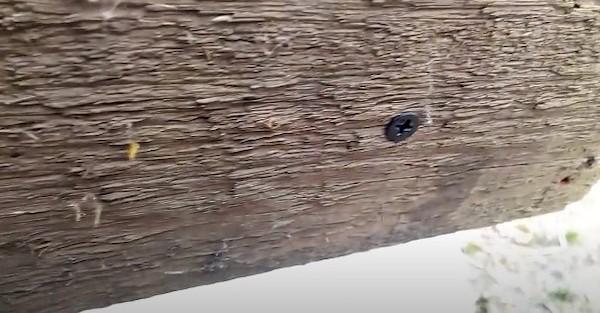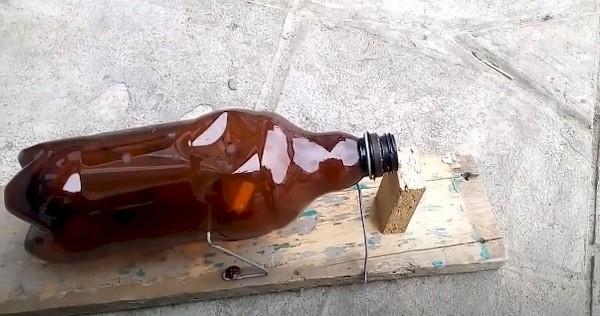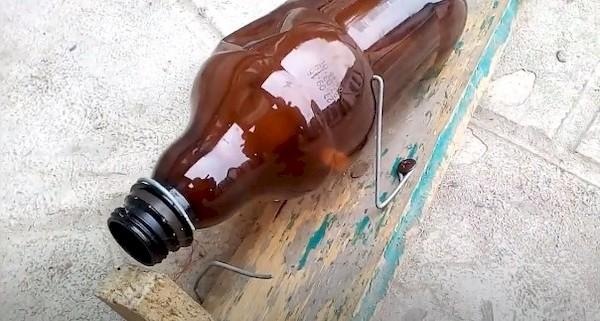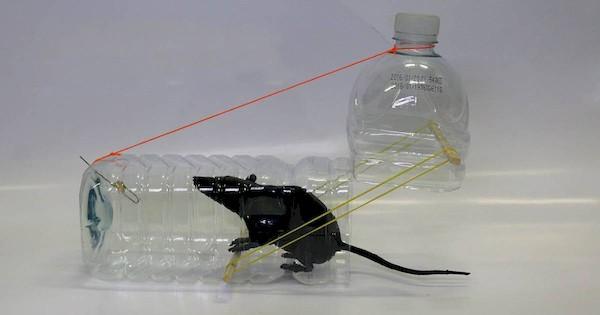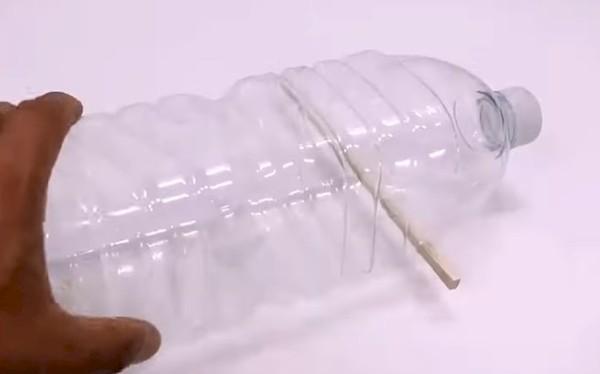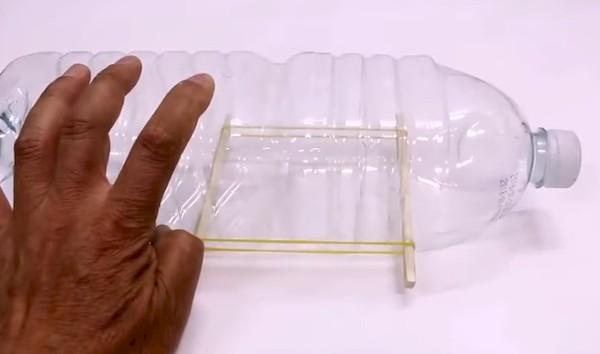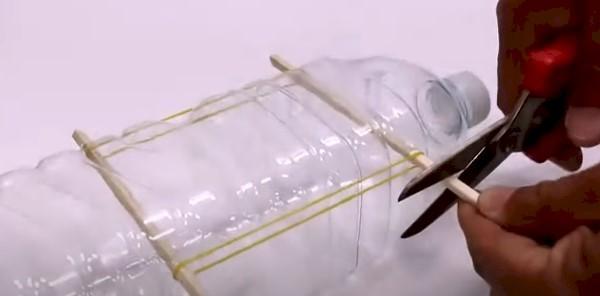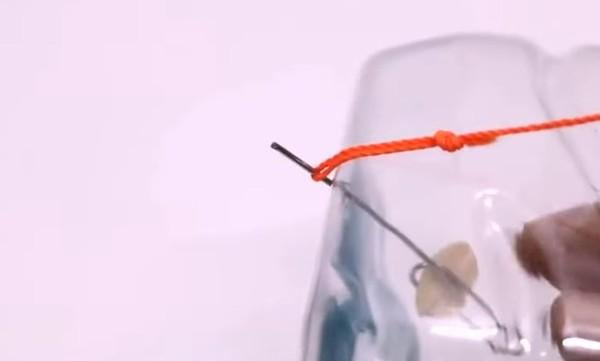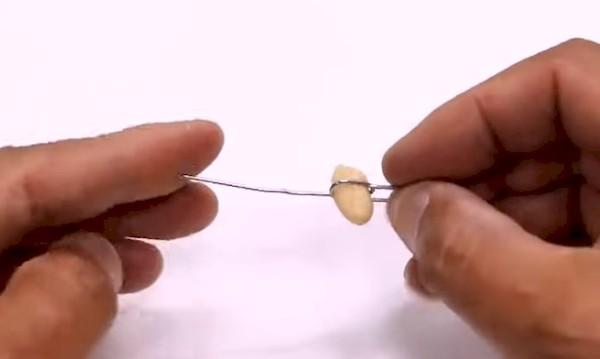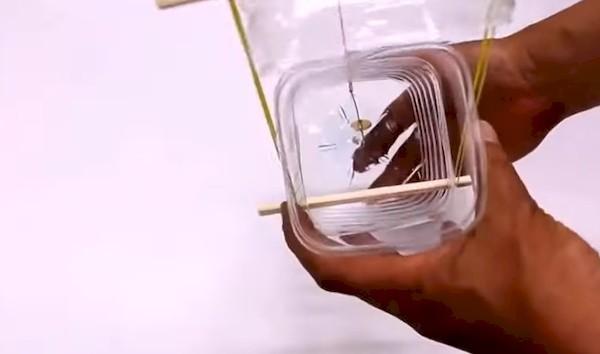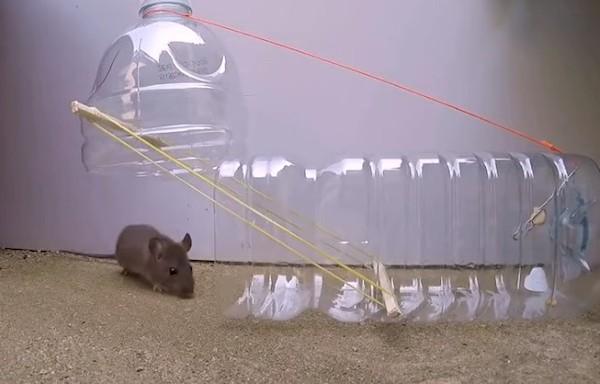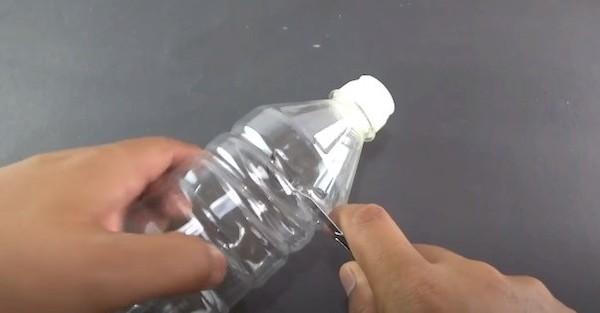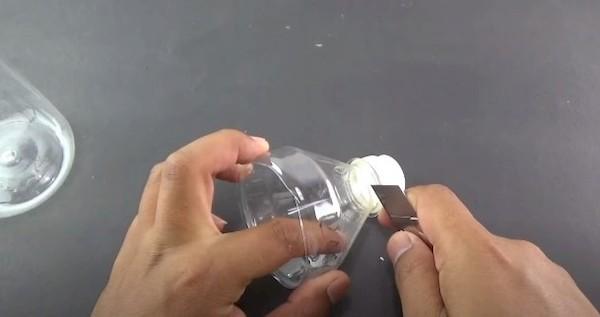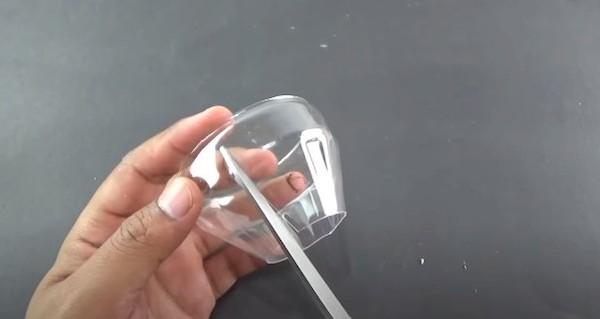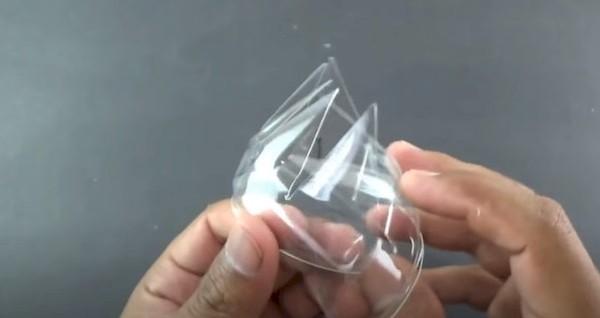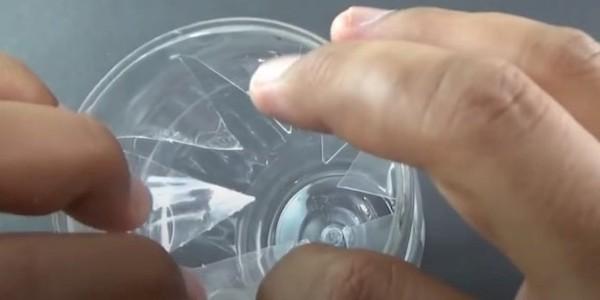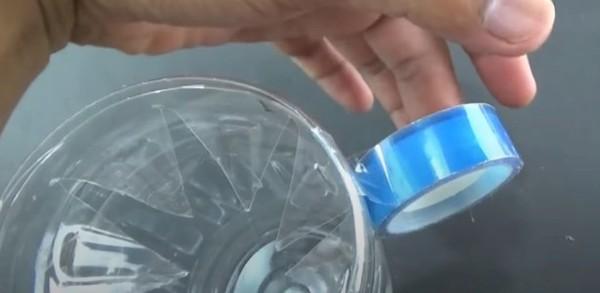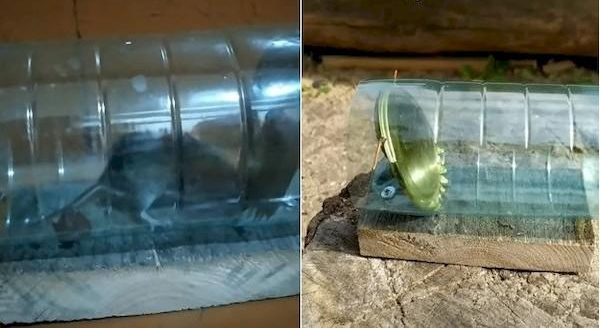How to make a mousetrap from a plastic bottle at home: TOP 5 ideas
The most reliable DIY mousetrap is made from a plastic bottle. If you hear a rustling sound or a characteristic squeak, or find mouse excrement, do not waste your time. You can make 5 different mousetraps from a plastic bottle in 1 hour, and in a few days your house will be pest-free.
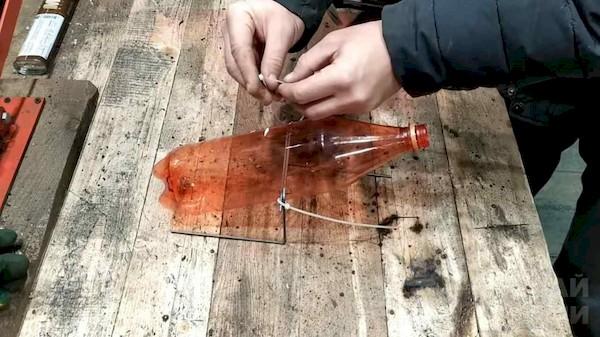
For reference. One mouse gives birth to 8-12 pups every 3 weeks. If you do nothing, your home will quickly become infested with rodents. As much as this is an unpleasant neighborhood for a person, it is so dangerous. Mice spread fleas and ticks, are carriers of salmonella, leptospirosis, hantavirus, and other diseases; they spoil not only food, but also cables and insulating materials.
Pros and cons of plastic bottle traps
People have come up with many types of mousetraps, poisons, and repellers. Mouse glue and sticky strips are considered one of the most effective rodent repellents. A mouse interested in the bait sticks tightly and can no longer get out.But this is also the most inhumane method of extermination - the animal squeaks for a long time, suffers, and then dies from hunger and thirst.
Bottle fishing does not require killing the rodent. You can take the trapped mouse away from your home and release it.
Pros and cons of plastic bottle traps:
| Advantages | Flaws |
| A humane way to exterminate the mouse population in the house | Some commercial mouse repellents are more effective |
| No need to spend money on purchased traps, poison, or consumables | It takes time to make |
| Easy to do yourself | |
| Reusable trap | |
| Safe for pets and children | |
| Helps in 90% of cases | |
| Eliminates the storage of unnecessary plastic bottles |
How to make a mousetrap
All mousetraps are divided into two types: those that kill rodents, and those that lock them inside. Popularly, the second type is also called live traps. Live traps are made from plastic bottles. The mouse remains alive unless intentionally killed.
Bottle live traps can be designed in different ways. You can make a very simple trap in less than 5 minutes, or take a more complex master class. Minimum materials needed:
- plastic bottle with a volume of 1 liter;
- bait.
Mousetrap from a bottle - method 1
The first method is the simplest.
Take:
- plastic bottle (the bigger the better);
- a little vegetable oil;
- a piece of cheese or other bait.
Making a mouse trap in minutes:
- Pour about two fingers' worth of oil into the bottle.
- Close the lid and shake well.
- Throw in the cheese.
- Place the bottle at a slight angle. You can insert it between bags of food supplies, sandwich it between cans of preserves or tools in the garage.
- There should be something high nearby, level with the neck, so that the rodent can easily enter the trap.
- You can attach a wooden plank to the neck, which will serve as a ladder.
- When a mouse is tempted to eat the bait, it will not be able to get back out of the mousetrap - it is impossible to climb up the walls in oil.
Sometimes they make it even simpler - they use a bottle of vegetable oil, which is already slippery inside. If your mice are especially lively, jumping and overturning the trap, you can improve it as follows:
- Take a piece of strong rope, lace, twine.
- Tie tightly to the neck of the outside of the bottle.
- Securely fasten the other end of the rope to the leg of a chair or table (to the very top).
- The length of the rope should be such that the bottle hangs in the air and does not fall.
- Place the bottle on the edge of a chair or table with the neck facing the surface. Leave two thirds of the mousetrap “above the abyss.”
- Place the bait as far as possible and wait.
The trap works like this: the mouse runs to the bait, the bottle tilts off the table (chair), falls, and hangs on a string. The rodent climbs to the entrance, but its paws slide along the walls in oil. All attempts to get out are in vain.
Mousetrap from a bottle - method 2
In the second option, a kind of swing is made from a plastic bottle, rigid wire, a wooden plank and a block. The mouse easily gets inside the trap, but cannot get out - the block closes the neck like a door as soon as it runs to the exit.
What materials are needed:
- old plastic bottle;
- wooden board 30-50 cm long;
- small wooden block;
- rigid wire or thin rod;
- 3-4 self-tapping screws;
- lighter
- any bait.
How to make a swing mousetrap step by step:
- Secure the wooden block with 1-2 self-tapping screws at the very edge of the board.
- Take two pieces of wire of the same length. Make a round loop on one side on one and the other wire. Bend in a Z shape.
- Heat the sharp end of the wire with a lighter. Pierce the bottle in the center.
- Insert the second wire in the same way from the opposite side.
- Screw the swing from the bottle using self-tapping screws to the board using the loops so that the neck is adjacent to the block.
- From the top of the block the mouse should fall into the bottle. The block serves as a kind of step.
- Place bait and place a mousetrap near the mouse nest.
Advice. Make sure that when lowering the neck of the bottle there is no gap near the bar through which a rodent can escape. If there is a gap, install a limiter at the bottom of the neck (a wire bent in an L shape).
Mousetrap from a bottle - method 3
The next mousetrap will have a trigger mechanism. It can also be used to catch rats.
Prepare everything you need:
- plastic bottle with square sides, 2-2.5 liters (with lid);
- screwdriver;
- scissors or stationery knife;
- sticks – 2 pcs. (can be used for sushi);
- rubber bands for money – 2 pcs.;
- strong rope;
- paper clip;
- bait.
Master Class:
- Cut the bottle in the upper third so that it rests on one wall. Photo:
- Heat the screwdriver and make a hole on the folding part, moving 1-2 cm from the edge and 1-2 cm from the cut. Make a second hole on the opposite side.
- Insert the stick, piercing the bottle all the way through.
- At a distance of 15 cm from the first pair of holes, make a second pair of holes at the same level.
- Insert the second stick.
- Tighten the ends of the sticks with rubber bands. The protruding ends can be cut off.
- Place the structure with the sticks down.Make a hole with a screwdriver from the bottom in the upper part in the center. Photo:
- Bend the paper clip on one side. Thread the bait on the other side. It needs to hold up well. You can take lard and cheese.
- Insert the bait from inside the bottle into the hole at the bottom. The bent end of the paper clip should come out.
- Tie a rope to the neck. Bend the moving part upwards as much as possible. Make a loop in the rope and loop it over the end of the paperclip. The rope should keep the trap open.
The principle of operation is this: the mouse pulls the bait on the paper clip, it slips out, and the rope stops holding the “door”. The mousetrap (rattrap) collapses due to the tension of the rubber bands.
The video shows step by step how to make such a plastic mousetrap. At the end, a hidden camera captured the moment the rodent was caught and locked inside.
Mousetrap from a bottle - method 4
Another simple mousetrap made from a plastic bottle. You can make it at home in 5 minutes.
Necessary materials:
- empty bottle;
- scissors;
- stationery knife;
- stationery tape;
- bait.
Step-by-step production:
- Cut off the tapered top of the bottle.
- Cut off the threaded part (the neck itself).
- On the narrow side, cut sharp teeth with scissors, as in the photo:
- Cut the piece so it can be rolled more tightly.
- Insert the teeth inside the second part of the bottle.
- Secure the parts with tape.
- Place bait inside.
The mouse will easily get inside by squeezing through the sliding teeth. But you won’t be able to get out, because the teeth will close.
Mousetrap from a bottle - method 5
We will make the last fifth mousetrap from a bottle with a tricky door that opens only in one direction. For this you will need:
- regular plastic bottle;
- tin lid (can be used);
- a piece of rigid wire;
- awl;
- pruning shears or a strong knife or scissors;
- bait.
How to make a mousetrap:
- Cut off the narrow part of the bottle. She's not needed.
- Place the workpiece horizontally on its side.
- At a distance of 2-3 cm from the “entrance”, almost at the very top, punch a hole with an awl on one side and on the opposite.
- Push in the lid. Position it so that it completely blocks the entrance, slightly inclined (lower part forward). The top should be flush with the holes.
- Punch the lid with an awl or make dots with a marker, and then make a hole.
- Insert wire. The lid should lift easily.
- Disassemble the structure. Cut the bottom of the lid with pruners, a knife or scissors. You should get sharp teeth.
- Reinstall the cover.
- Put something tasty and aromatic inside. The mousetrap is ready.
If you wish, you can screw it with a self-tapping screw to a heavy wooden block so that the mouse does not roll around in the bottle on the floor.
Question answer
Where to place a mousetrap so that it works?
Mice are quite cautious and timid creatures. They move over the walls, run under cabinets and even inside furniture. It is better to place traps away from human eyes, optimally near burrows. The burrows are identified by the excrement that densely litters the entry site. You can also leave a mousetrap among food supplies.
What to put inside?
In mousetraps with a trigger mechanism, there is a difference in what to load - the bait should not crumble so that the mouse does not eat it piece by piece. You can string lard and peeled walnuts onto a wire. You can put anything into a simple bottle mousetrap. The more attractive the product, the stronger the smell, the better.Popular options: cheese, a piece of dry bread soaked in homemade unrefined sunflower oil, peanut butter, Nutella, ham, sausage.
Can a mouse chew a hole in plastic?
It depends which one. They usually chew through the caps on plastic bottles and barrels, but do not touch transparent plastic. Mice will not escape from a plastic mousetrap. It is much more difficult to chew a hole from the inside than from the outside.
What other options for humane mousetraps are there?
You can make a mousetrap from a ruler and a deep bucket or barrel, from which the mouse is not able to jump out (half a meter high). You need to put a bucket near the table. Place a ruler on the table so that its edge hangs over the bucket. Place the bait on the very tip. The rodent will follow the ruler and fall straight into the trap.
How to make rodents die in a home mousetrap?
Use poisoned grain as bait. This poison is sold in the same place as other poisons for cockroaches, rats, and mice. Typically, poisoned grain is red in color. Rodents eat it with pleasure. The advantage of a plastic mousetrap with poison is that the mouse will not run away and die somewhere in the crack. An unpleasant odor will not spread throughout the apartment.
The problem with mice in the house can be solved quickly and easily if you are smart and spend a little time. Mousetraps made from plastic bottles are just as effective as store-bought ones, and some of them do their job even better. The most attractive thing about them is that you don’t have to spend money on buying traps that may not help. Mousetraps are made literally from nothing, from waste that is thrown away.
